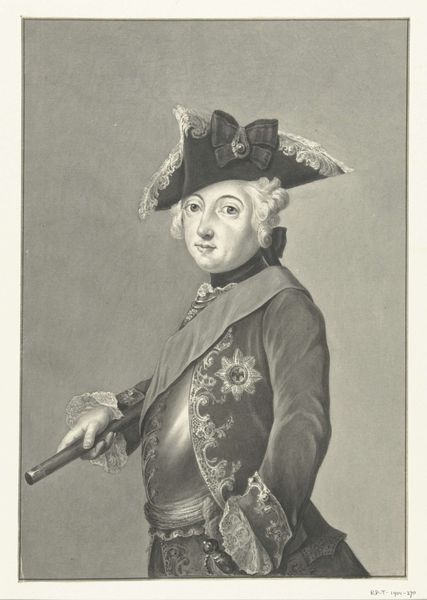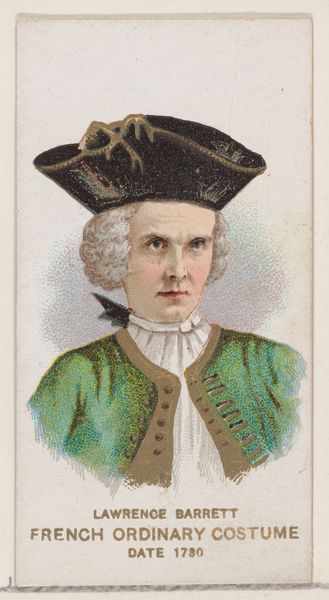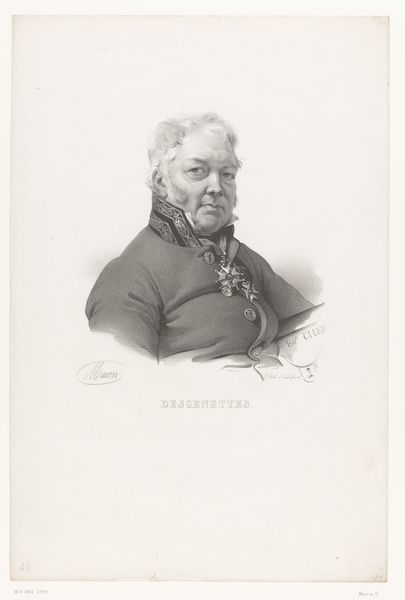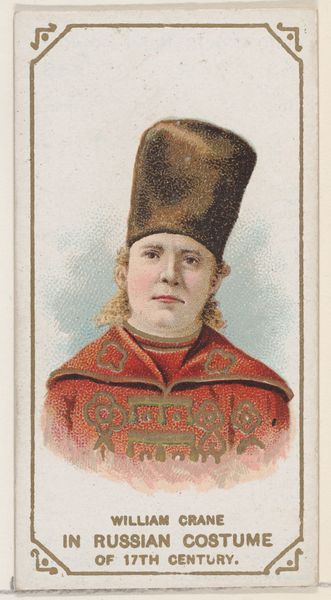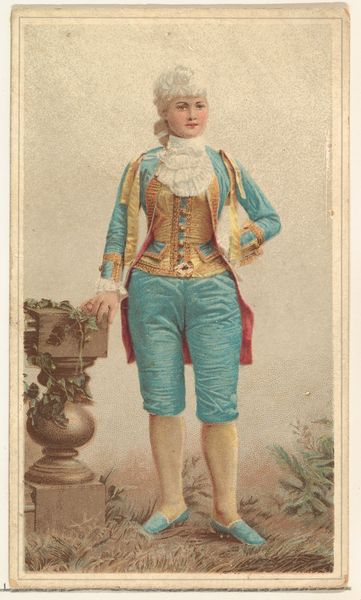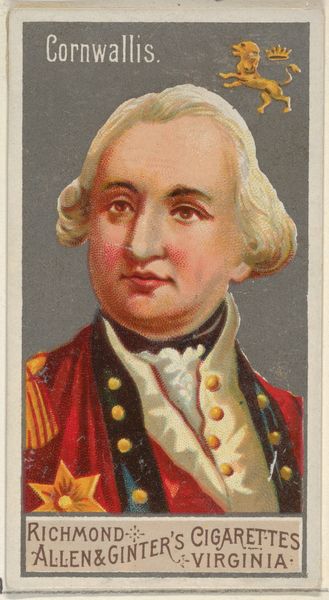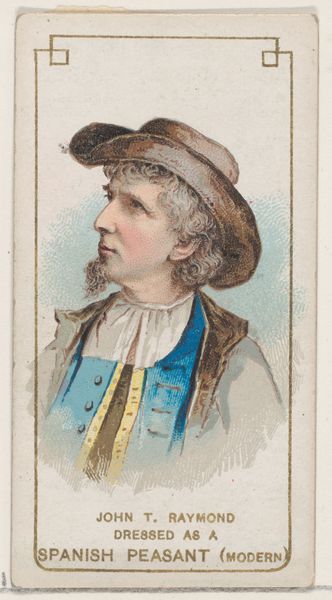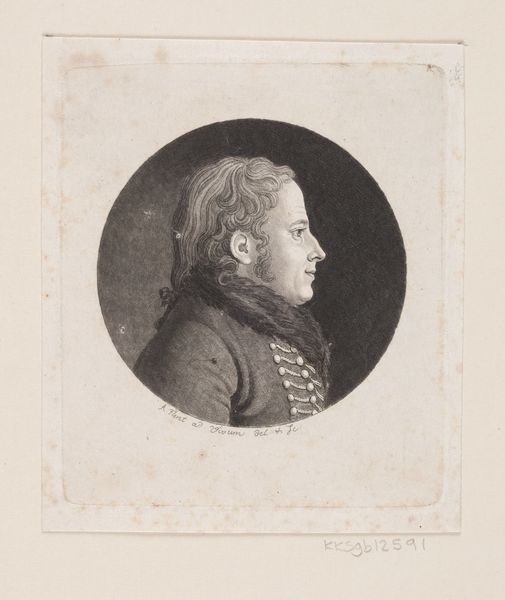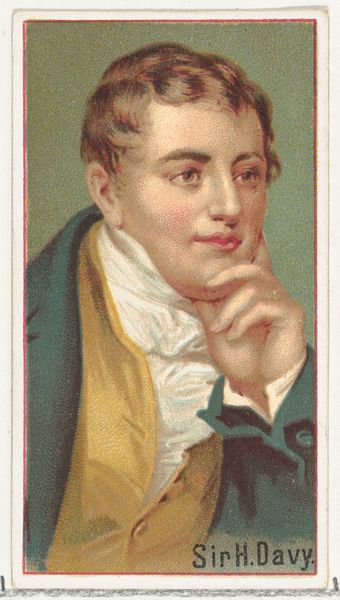
Denman Thompson as Friesland Skipper in Sunday Clothes, from the set Actors and Actresses, Second Series (N71) for Duke brand cigarettes 1888 - 1890
0:00
0:00
drawing, print
#
portrait
#
drawing
# print
#
caricature
#
coloured pencil
#
men
#
genre-painting
Dimensions: Sheet: 2 3/4 x 1 1/2 in. (7 x 3.8 cm)
Copyright: Public Domain
Curator: Let's consider this curious little piece, "Denman Thompson as Friesland Skipper in Sunday Clothes," a color print made by W. Duke, Sons & Co. sometime between 1888 and 1890. It's part of their "Actors and Actresses" series, seemingly designed for cigarette cards. Editor: Immediately, I'm struck by its quaintness, and, dare I say, oddness. There's something almost dreamlike about this fellow, with his peculiar hat and slightly glazed expression. Curator: The medium itself is intriguing, isn't it? The use of colored pencil and printmaking techniques together suggests a mass-produced object aiming for an elevated aesthetic, blurring the line between commodity and collectible. It really speaks to the democratization of art at the time. Editor: Indeed. The rosy cheeks and the polka-dotted cravat contrast starkly with the green hat, drawing the eye in a playful yet disorienting manner. One wonders what "Friesland Skipper" signified back then – perhaps a jovial, somewhat absurd archetype that the audience would instantly recognize? What cultural memories were triggered? Curator: Perhaps. What's more important, in my opinion, is the commodification of celebrity, that in placing his likeness on something mass-produced it is giving social license to consumerism itself. Thompson wasn't selling acting here so much as lifestyle. Editor: Good point! But there's something more personal there. Thompson himself is dressed as a character; as a type. He becomes an embodiment of Sunday best and rustic maritime life. It allows for an exploration of the ideal man; or rather; that he has many dimensions and that these things could even occupy a single, stylish soul. Curator: The very fact that it was distributed with cigarettes underscores how entangled art was with commerce. The paper stock itself and printing style contribute to the sense of fleetingness, of disposability that makes these collectibles so unique, and worthy of our attention in this museum setting. Editor: Yes, by analyzing the imagery, by viewing Thompson as "type," perhaps we can better access not only an aesthetic movement, but more fundamentally, how human identity once sought new form. Curator: In essence, what looks to be a mere trinket reveals a deeper look into how fame and consumption was materializing and taking hold. Editor: Ultimately, what appears simple is laden with cultural associations; what might at first be discarded resurfaces here as worthy of examination and offers surprising echoes into our modern world.
Comments
No comments
Be the first to comment and join the conversation on the ultimate creative platform.



